Differences between breeds Moscow Watchdog and St. Bernard
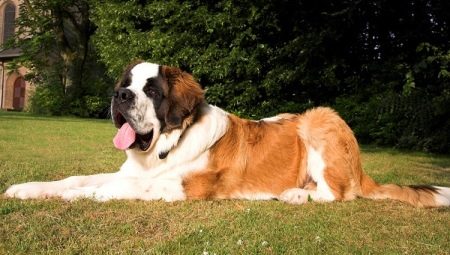
Large breeds of dogs are mainly used for protection and protection, as well as for the rescue service. The two varieties of Moscow Watchdog and St. Bernard are very similar to each other. What is the difference between one and the other?
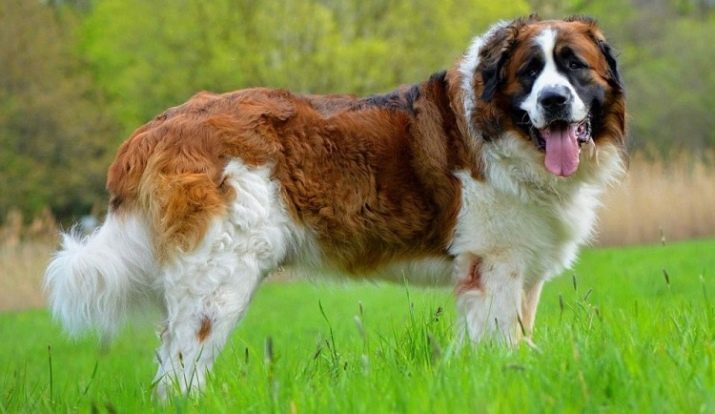
Description and features
St. Bernard
The oldest breed. Comes from the Assyrian dogs, molossians, who came to the Alps during the campaigns of conquest along with the Roman legionaries. For the most part, it was formed in a natural way, spontaneously, people only tried to consolidate the useful skills that appeared.
The name comes from the name of the alpine mountain monastery of St. Bernard, where from the seventeenth century monks kept them and used to rescue victims from avalanches and during dangerous mountain crossings. The first mentions of smart and strong dogs date back to the same period.
Large size (height at the withers 70-90 centimeters), muscular strong paws, thick, dense coat, excellent sense of smell - all these qualities helped the animal to find people under deep snow, dig them out and drag them to a safe place.
Often it was necessary to act in extreme conditions, thanks to which the mental abilities of the St. Bernard rose to a fairly high level.
The dog is able to quickly make independent decisions to get out of difficult situations.
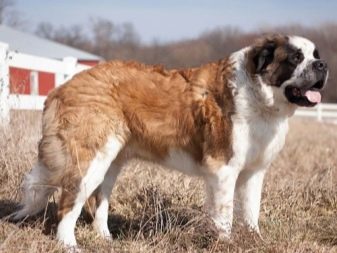
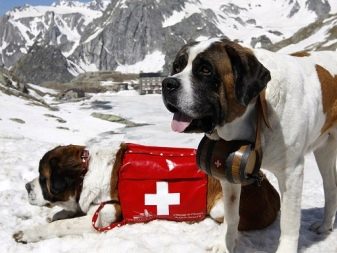
The following qualities are characteristic of St. Bernard:
- with an impressive size, it is distinguished by a kind, flexible character;
- calm, slightly phlegmatic;
- strongly attached to the owners, showing love and tenderness;
- feels like a member of the family, does not tolerate loneliness;
- gets along well with other pets;
- can be a nanny for small children, a companion;
- has high intelligence, learns well;
- loves walks, outdoor games, especially in the snow.
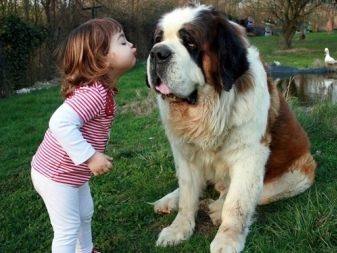

Training and education should be organized so as not to injure the psyche of the animal, without undue pressure and rigidity. A much greater effect will be given by a calm and affectionate treatment, a detailed explanation and conversation with the dog, since the St. Bernard is able to distinguish not only the intonation of the voice, but also the meaning of many words. Suitable for keeping in an apartment.
There are two varieties of the breed - long-haired and short-haired. The color of the coat is reddish with white. The chest, front of the neck, paws and tail are white, the back is light red, the head, ears and the area around the eyes are brown, there is a white stripe on the forehead, there are also light spots near the nose and lips. The tail is fluffy, curled up in a ring. The head is massive, the muzzle is slightly flattened, with folds (flews), the nose is snub-nosed, the ears are hanging, the forehead is convex. The eyes are dark, close-set, with a good-natured and slightly sad expression.
It is not used in the role of a guard dog, since it treats people, even strangers, kindly.
Saint Bernard's vocation is to save and protect the owners during various natural disasters.
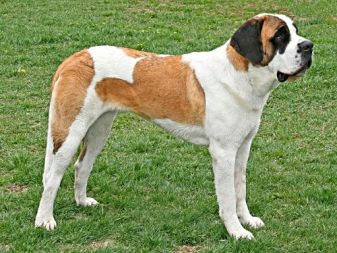
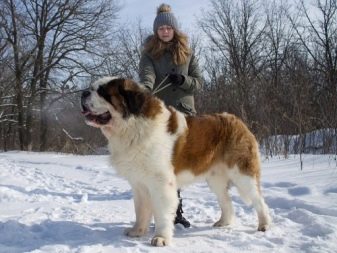
Moscow watchdog
This breed is exclusively the product of breeders. She was bred in the Soviet Union in the Krasnaya Zvezda nursery shortly after the end of the Great Patriotic War. It was designed specifically for the protection of various objects of the national economy. The work was mainly completed by 1958, at the same time a description of the breed standard appeared.
The following were taken as the initial species:
- St. Bernard - large size and developed intelligence;
- Caucasian Shepherd Dog - the ability to protect the owner and his property from any encroachment;
- Russian piebald hound - movement speed, the ability to catch a robber.
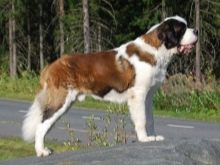
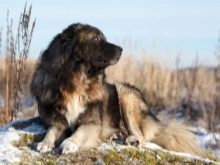

The resulting dog took on some of the traits and physique characteristics from each of the breeds. But there are also differences.
For example, if we compare with St. Bernard, with a large external similarity, there is a significant difference in behavior and communication with people.
The Moscow Watchdog knows exactly the boundaries of its territory and will not allow strangers to violate them.
She vigilantly guards the owners, treats unknown visitors with wary and distrustful attitude.
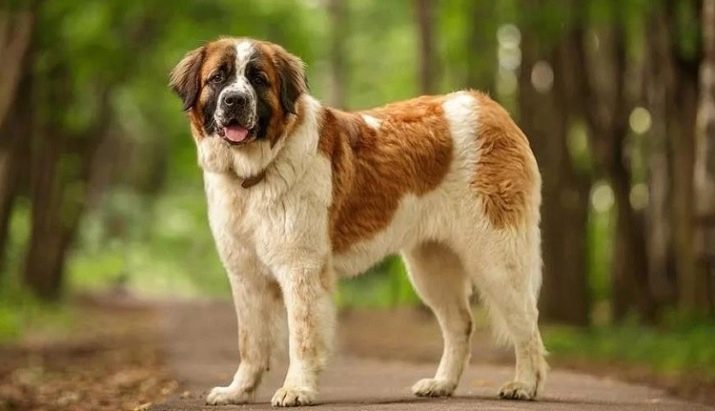
Smart, trainable. However, training must begin from a very early age, only the puppy will be able to navigate in the environment. You should take into account the size of an adult dog (a little smaller than a St. Bernard) and train it to obey commands without question. You also need to get used to the muzzle in time.
With the wrong or insufficient upbringing there is a risk of getting an uncontrollable, aggressive dog, which will pose a threat not only to outsiders, but even to family members.
Understands the hierarchy, obeying the leader, a person with a stronger character. Can be alone for a long time, live on the street - in an aviary, kennel or on a leash.
Calmly tolerates winter cold and a drop in temperature (even up to minus 30 degrees), you just need to provide protection from the wind.
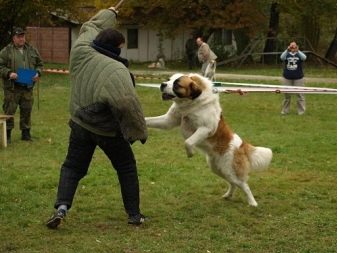
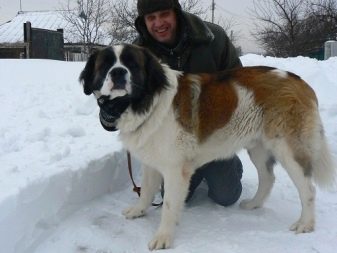
The dog is muscular, strong, heavy, with rough shapes. The body and head are more elongated than that of the St. Bernard, the nose is straight, there are no folds on the cheeks. The tail is smooth, not curled.
The coat is very thick, the animal sheds almost all year round. The color also contains red, brown and white. Paws, tail, neck, chest, muzzle are white. The back and sides are reddish, the head and semi-erect ears are brown.
This breed is ideal for guarding a country house, but not for living in an apartment.
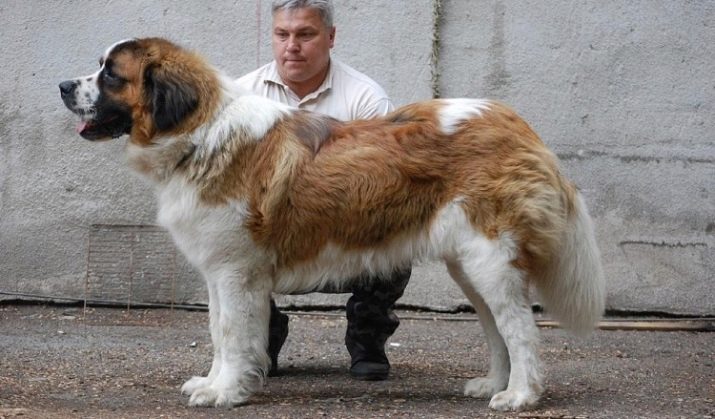
Different tempers
St. Bernard and the Moscow Watchdog, although very similar in appearance, have completely opposite character traits.They are different breeds for different purposes. This circumstance needs to be seriously thought about before choosing a pet for yourself.
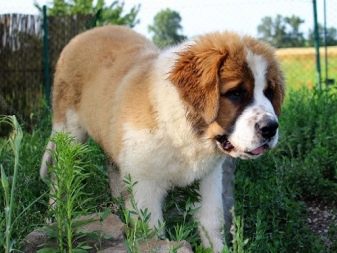
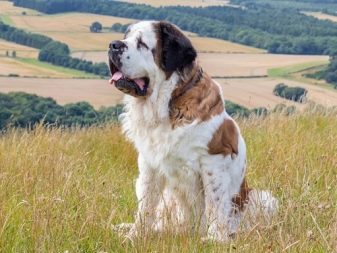
You can find out about the peculiarities of raising a St. Bernard by watching the video below.






































